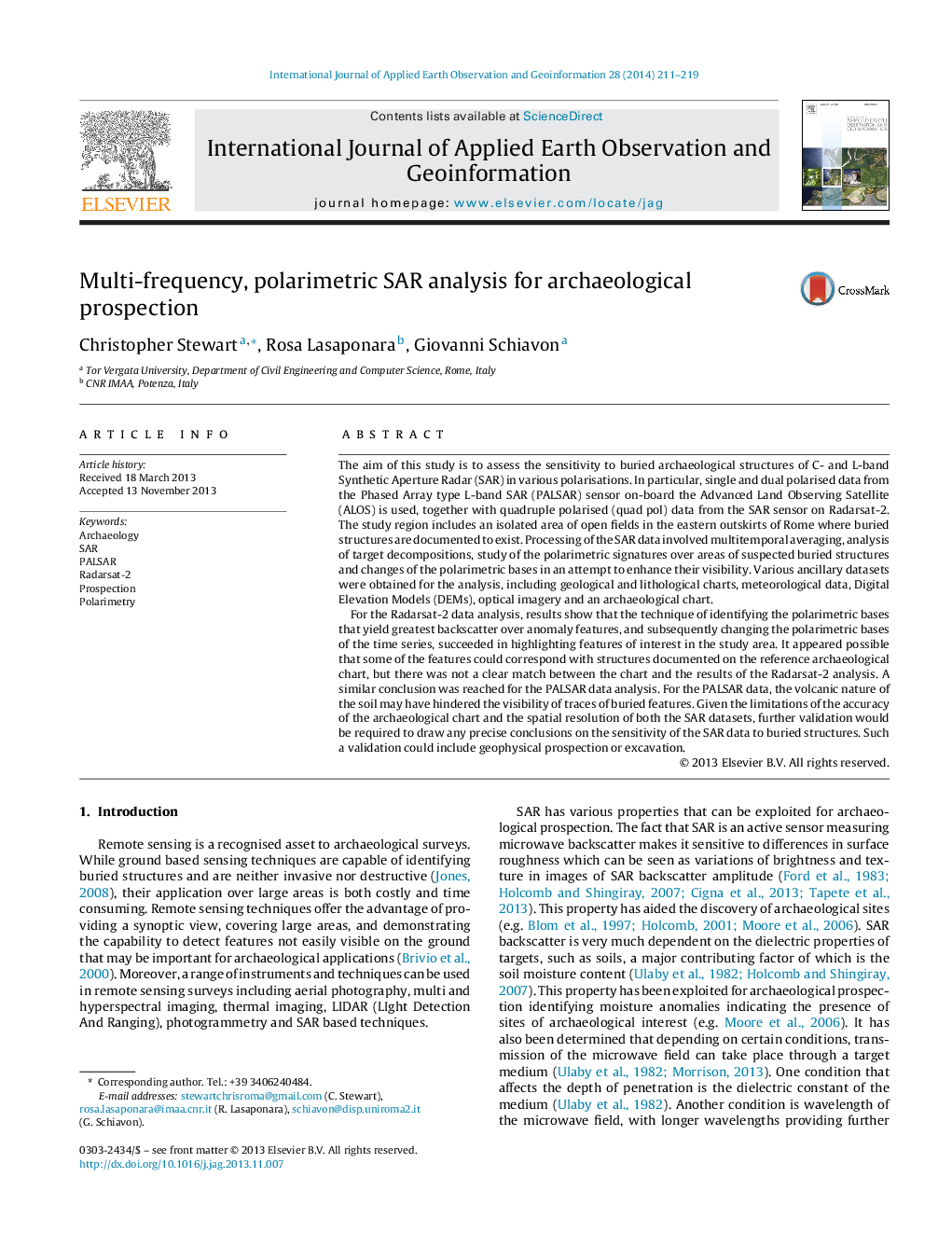| Article ID | Journal | Published Year | Pages | File Type |
|---|---|---|---|---|
| 6348989 | International Journal of Applied Earth Observation and Geoinformation | 2014 | 9 Pages |
Abstract
For the Radarsat-2 data analysis, results show that the technique of identifying the polarimetric bases that yield greatest backscatter over anomaly features, and subsequently changing the polarimetric bases of the time series, succeeded in highlighting features of interest in the study area. It appeared possible that some of the features could correspond with structures documented on the reference archaeological chart, but there was not a clear match between the chart and the results of the Radarsat-2 analysis. A similar conclusion was reached for the PALSAR data analysis. For the PALSAR data, the volcanic nature of the soil may have hindered the visibility of traces of buried features. Given the limitations of the accuracy of the archaeological chart and the spatial resolution of both the SAR datasets, further validation would be required to draw any precise conclusions on the sensitivity of the SAR data to buried structures. Such a validation could include geophysical prospection or excavation.
Related Topics
Physical Sciences and Engineering
Earth and Planetary Sciences
Computers in Earth Sciences
Authors
Christopher Stewart, Rosa Lasaponara, Giovanni Schiavon,
